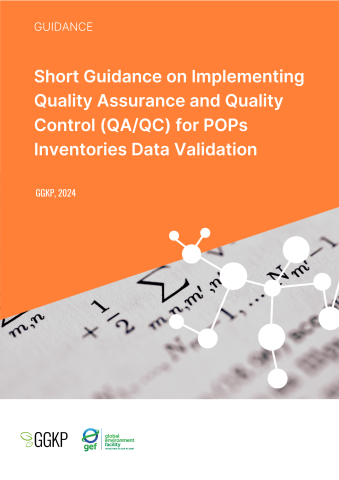
The main objective of creating inventories of persistent organic pollutants (POPs) is to gather information that is essential for managing POPs, developing and reviewing National Implementation Plans (NIPs), and meeting the information requirements outlined by the Stockholm Convention. These inventories play a crucial role in identifying national priorities within the NIPs and facilitating the development of elimination projects. To achieve this, it is imperative to have accurate and reliable data on the production, usage, stockpiling, and waste generation of POPs within a country.
In Step 4 of the POP inventory, data should be assessed for completeness and plausibility and some elements of a quality assurance/quality control (QA/QC) system are already briefly mentioned as a first baseline. However, there is no document that specifically inform on QA/QC for POPs inventories. For that reason, this document has the objective to serve as a short guidance on the implementation of a more complete QA/QC system for data generation and validation in POP inventories.
By following these guidelines, countries can improve the accuracy and reliability of their POPs inventories, thus facilitating effective management and decision-making processes related to POPs. The development of comprehensive inventories allows for the assessment of national priorities, aids in the identification of elimination projects, and provides crucial information for the evaluation of the effectiveness of the convention. The target audience is the national focal points of the Stockholm convention, policymakers and government officials involved in the process of NIP review and update.
As part of the GEF-funded and UNEP-led “Global Development, Review and Update of NIPs under the Stockholm Convention on POPs” project, the Green Growth Knowledge Partnership (GGKP) is executing Component 4, focused on disseminating information, managing knowledge and coordinating with the Stockholm Convention Secretariat to provide accessible, integrated tools and resources for all Parties.
